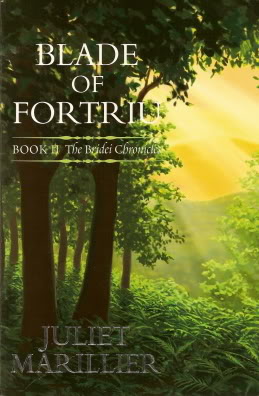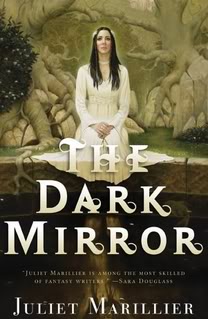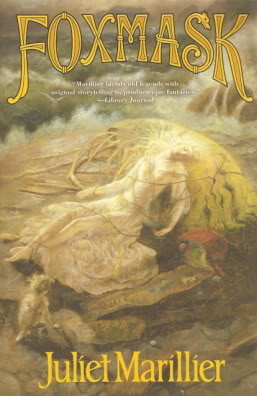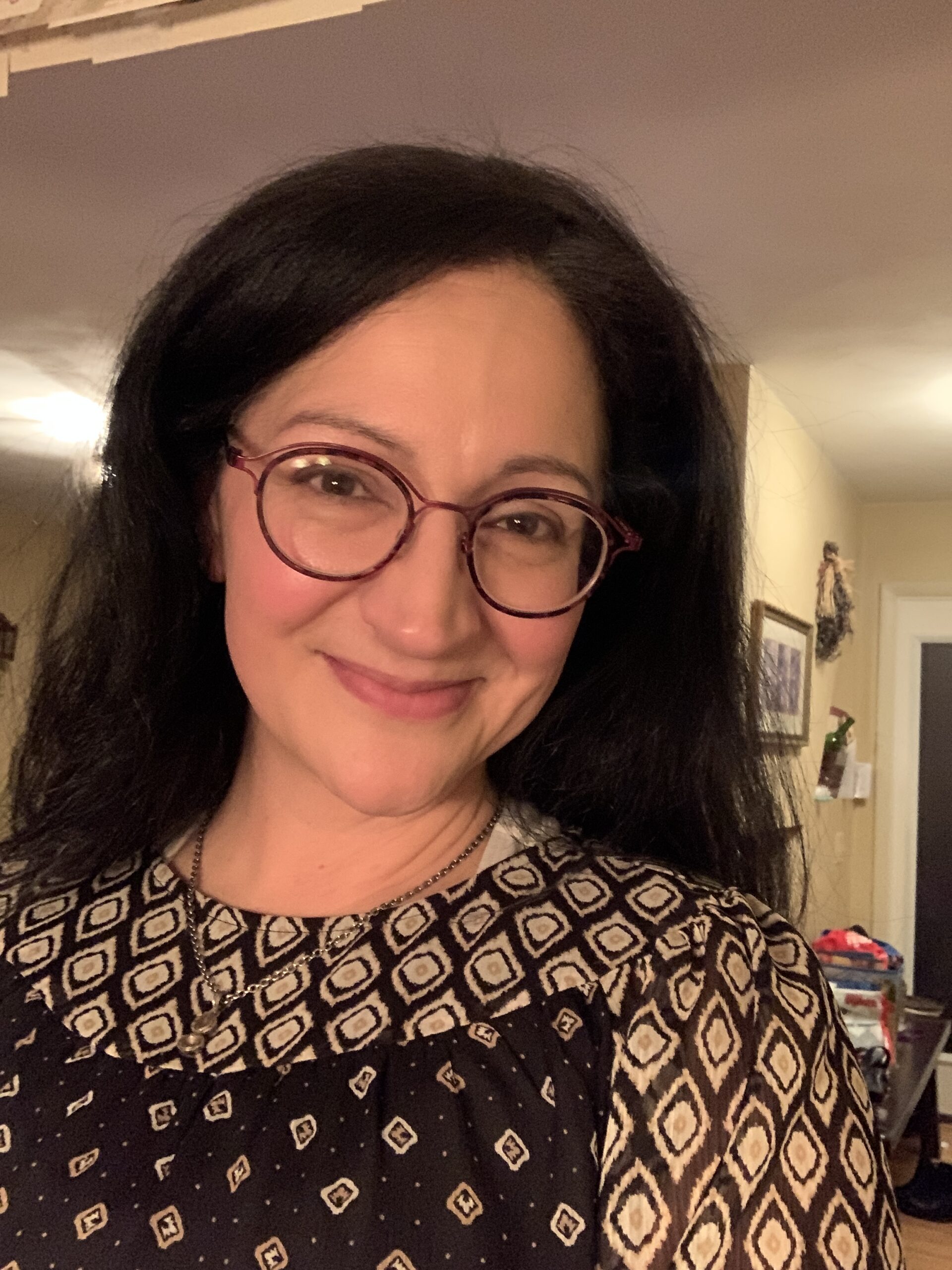INTERVIEW: Juliet Marillier, Part 2
By Therese Walsh | October 27, 2006 |
 If you missed part 1 of our interview with Juliet Marillier, you can access it by clicking HERE. Marillier’s unique plotlines, strong characterizations, word painting and the scope of her world building set her apart from others in the historical fantasy genre. Below, we get a behind-the-scenes look at her complex storyweaving skills and learn more about her latest release, Blade of Fortriu, available in U.S. markets on October 31st.
If you missed part 1 of our interview with Juliet Marillier, you can access it by clicking HERE. Marillier’s unique plotlines, strong characterizations, word painting and the scope of her world building set her apart from others in the historical fantasy genre. Below, we get a behind-the-scenes look at her complex storyweaving skills and learn more about her latest release, Blade of Fortriu, available in U.S. markets on October 31st.
Part 2: Interview with Juliet Marillier
Questions about Blade of Fortriu:
Q: Though all of your books are complex interwoven epics, the inner workings of Blade of Fortriu—with the huge cast of characters and the intense multiple storylines—seemed to me more intricate and thoughtful than your other novels. How was this book different for you? What new challenges did you face?
JM: The main challenge was maintaining continuity while jumping between sets of characters (for those who haven’t read it, the book begins with most of the major characters together, then separates them for a lengthy period while they go on their various journeys, and brings them back together near the end.) The major political story (Bridei’s march on Dalriada) had to be presented in a grand way as it deserved, yet include that personal element, because a thread that runs through all three books is what Bridei has to sacrifice every day to fulfill his destiny as a perfect king. The reader has to be able to juggle the big military and political events, the tangled love story, the ‘mystery and escape’ thread and Tuala’s journey towards discovering her true identity. There’s also Faolan’s back story in there. They all work on different levels of intensity.
Having said that, I didn’t find this book particularly difficult to write because I was so absorbed by the characters and their stories. It didn’t seem any more complex to write than, say, Wolfskin or The Dark Mirror. I do think I put into place some storytelling techniques I have learned over the course of writing my first six books.
Q: Blade of Fortriu is packed with short scenes and is more dialogue intensive than some of your other works. Is this a new trend for you?
JM: Probably yes, although this was not a conscious change of approach for me, it just suited that particular story. It was easier and more appropriate to structure Blade of Fortriu this way because it had multiple storylines – I had to keep moving around to maintain focus on each set of characters. The Well of Shades is structured in the same way.
Q: The wolf-attack scene in Blade of Fortriu is especially vivid and terrifying, and is a great example of make-it-worse storytelling, where each new element in the scene creates more demanding challenges and obstacles for the characters. First the characters face fear as wolves circle, then there is battling, injury and fatigue, then rain and loss of fire—weapon and light, and eventually a new possibility of death at the hands of an old enemy. Do you look for opportunities in the story to increase the tension this way, and at what stage of writing do you do this?
JM: There was no conscious thinking of how to increase the tension, these details just came to me as I was writing the scene – this was one of those parts of the story where I sat down and wrote without being particularly aware of what I was doing. Those are usually the sections that turn out best and need least editing afterwards. Once the initial planning is done, a lot of my work is quite instinctive. I may at one point have thought, ‘What can happen next? I know, it starts to rain!’ But that’s only because it does rain nearly every day in the Scottish Highlands, so it is simple realism. I just try to imagine myself in the situation and think of all the things that could happen.
Q: How did you go about developing a relationship and building chemistry between Ana and her sweetheart when they were kept apart for most of the book?
JM: By putting mythical or fairytale elements into their story, starting with a hint of ‘love at first sight’ and later using the device of allowing them to talk without seeing each other. There is also the involvement of animals as messengers. Without that hint of something otherworldly between these two, it could be hard for the reader to believe in the intensity of their chemistry, especially as the reader may well want the story to go in a different direction here. Also, there is a character involved who is markedly different from the run of the mill hero, someone who thinks and acts outside the square, and for this person, the reader accepts that the usual rules don’t apply. As for Ana, she is introduced as a woman for whom duty is paramount, but by this stage she has already proven that she can be far more than that, so she is open to this fascinating but forbidden new relationship.
 Q: Blade of Fortriu is second in a series called The Bridei Chronicles. [Note: the first in the series is called The Dark Mirror.] How many more books do you plan in this series? How do you see the series evolving? What will the next book be about?
Q: Blade of Fortriu is second in a series called The Bridei Chronicles. [Note: the first in the series is called The Dark Mirror.] How many more books do you plan in this series? How do you see the series evolving? What will the next book be about?
JM: There are currently three books in the series – the third one, The Well of Shades, has just come out in Australia and will be followed by UK, US and foreign language editions. I plan at least one more Bridei book, to be set eighteen years after the end of The Well of Shades. The Bridei Chronicles are structured around the life of a real Pictish king, Bridei son of Maelchon. The follow-up novel will look at a later part of his reign, when he’s on the verge of achieving his lifetime political goal by uniting the two Pictish kingdoms. It will weave that story with the personal tales of two women, a young herbalist and the rather complex Ferada who appeared in the first three books – this part of the story will involve her struggle not to repeat her mother’s mistakes.
Before I write that follow-up book I am writing a stand alone novel. It’s called Heart’s Blood and is a dark fantasy romance set in fourteenth century Ireland.
Q: Can you tell us more about that as well? What inspired Heart’s Blood? What sets it apart?
JM: I’m just beginning to write Heart’s Blood. It blends fairytale with history, but is essentially a story about overcoming fear and prejudice. The protagonist is a young female calligrapher struggling for recognition in her craft in a time and culture that offered women limited opportunities. The supernatural or ‘fantasy’ element in Heart’s Blood comes in the form of unquiet spirits rather than mythical Otherworld beings, and that makes it different from any of my previous novels. What inspired it? Partly a favourite fairytale, and partly a desire to explore the darker elements I had touched on in Wildwood Dancing. Heart’s Blood returns to the first person narration of the Sevenwaters trilogy (Wildwood Dancing and Kybele’s Gift are also told in first person.)
Q: Foxmask is another book that was second in a series. Will there be more?
JM: Not in the immediate future, but the story of Thorvald was definitely left unresolved and it would be interesting to write another book developing that. I’ve had a lot of requests from readers recently for a third installment.
Q: It’s interesting in Foxmask that we have three “suitors” for Creidhe’s affections: Sam, who would fiercely protect her but seems “in love” with her identity above all else; Thorvald, who takes all Creidhe offers him and treats her with throw-away concern, not really respecting her identity or her true essence until late in the story; and Keeper, who takes action and gives Creidhe what she needs—physical and emotional caring and a genuine interest in the deepest aspects of her person. What was your process in creating these men for this woman? Do you begin with the woman and think through what she needs, what she should learn, and then go from there to create her perfect complement?
JM: I began with two characters who were very much the product of their parentage and upbringing – for readers who don’t know these books, Thorvald and Creidhe are the children of the two major characters in Wolfskin, a pair of blood brothers who have a tortured love/hate relationship. I built in all the strengths and weaknesses I thought Creidhe and Thorvald would have acquired, including Creidhe’s warmth and her adventurous nature (which is there despite her desire to marry and settle down.) I consciously created, in Creidhe, a complete opposite to the Buffy the Vampire Slayer, Lara Croft kick-butt heroine who was so popular in fantasy not long ago. I was getting irritated by that stereotype so I deliberately made Creidhe extremely strong in traditional female virtues and talents. Of course, her journey takes her far away from the ‘good girl’ scenario, and her resilience is plausible because she is the daughter of a fearsome Viking warrior and a powerful priestess, who have provided her with the stabilizing influence of a solid, happy family upbringing.
From the start, I intended to have the relationship between Creidhe and Thorvald follow the path it did, with Thorvald not learning to appreciate Creidhe for what she truly is until she has gained the maturity to realise that she can never change his inmost nature. He’s equipped to be a leader, not a lover.
I did create Keeper as Creidhe’s perfect complement, someone who understands intuitively what she is all about and is able to respond to it from the heart, a character with a deep wisdom come of terrible hardship and sacrifice. Keeper has a great capacity for selfless love.
Q: Interesting how Creidhe realizes the discrepancy between what Thorvald is and what she’s dreamed he was just as Thorvald realizes he is actually more than he believed. (And I love the thematic irony when she lays into him about his foolish behavior while they struggle through the Fool’s Tide.) The fact that Thorvald’s need for an identity always takes precedence over his true essence is sad for him throughout. His journey seems far from over. Will you continue growing his character in later books, or did you leave him loose-threaded because that’s just what Foxmask demanded?
JM: As mentioned above, if I did write more about these characters it would be Thorvald whose story I would pursue. I try to create characters who show something of their heredity and upbringing, and I was very conscious of the previous book in creating both Thorvald and Creidhe. Thorvald is his father’s son, driven, clever but unable to fix his direction forward, and initially quite selfish in his attitude to others. During the course of Foxmask he learns a great deal, possibly including the fact that men like him are destined to lead lonely lives (although he recognizes that the respect of his fellow warriors is a wonderful gift that he must continue to live up to.) I left him at the start of that new journey, really just taking his first steps as ‘the new Thorvald.’ Once he has found his father and a community that respects his talents, we assume the need for an identity has been met and he can make something of his life.
Click below for the third and final installment of our interview with Juliet Marillier, where you’ll hear about plotting, character building and about the book that started it all, Daughter of the Forest.











Great interview :)
Greetings,
This was very detailed and information. I enjoyed it
very much
Hello,
Juliet can you explain me/us what’s the origin of the title book of foxmask ?
I was surprised to see my nick (i own since 10years) on amazone one day last year when you published your book ;)
That’s why i’m asking why ;)
Kind Regards
Hi FoxMask!
Foxmask is the name of a character in my novel – not so much a personal name as the generic name for the job of seer amongst a mysterious island people who feature in the book. I invented the name to match the title of the first book in that pair, Wolfskin, which is about a Viking ‘berserk’ warrior. These guys had two titles – berserkir (bear shirt) or ulfhednar (wolfskin.) It’s assumed these refer to what they wore in battle. Foxmask, the seer in my book, can take the form of either a child or a creature a little like a dog, a little like a fox.
Any resemblance to your nick is purely coincidental.
Hi Juliet,
Could you please tell me if you are writing another novel in the ‘Wildwood Dancing’, ‘Cybele’s Secret’ group. They are defiantly my favorite and I would really like to know what happens to Stela.
Thankyou
Misty
Hi Misty,
I can’t confirm yet that there will be a third book in this group, but it’s very likely. If I do write one, Stela will be the narrator.
I’m glad you liked the books!
Juliet